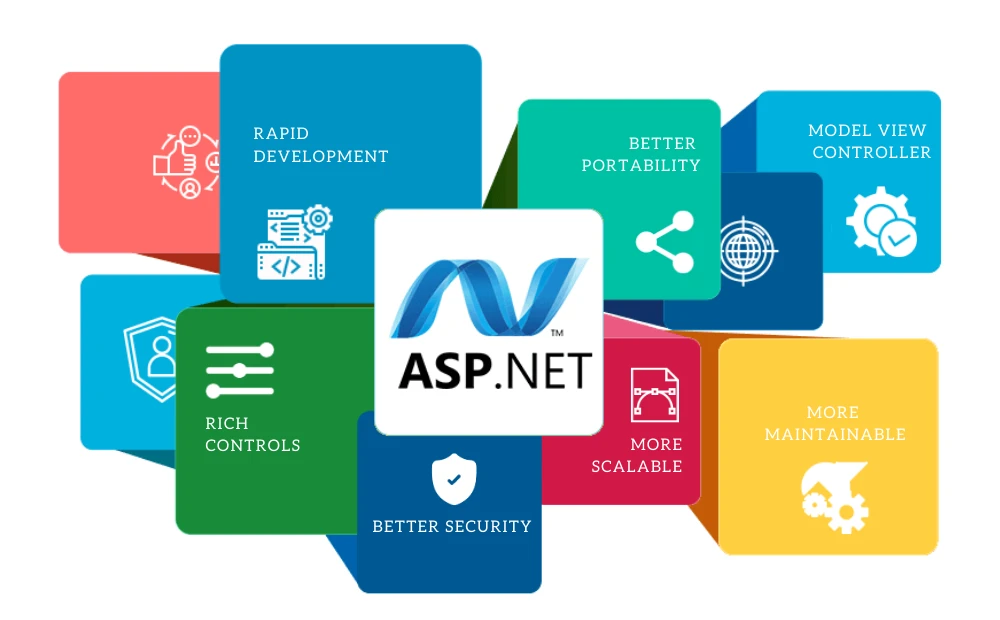Peek: Into the world of Web Applications
In the era of technology, the internet is dominating with people using it to read, share, network, buy, sell, build, and find what they want. The power of the internet lies in its ease and reaches to layman even in the remotest areas of the world. Behind the scenes, several scalable and dynamic technologies make the internet work. With the Internet of things, running even businesses becomes easy and hassle-free. A Web application comes to the fore in aiding the businesses and their processes. For example, build a simple e-commerce website to sell goods. Organizations aim to shorten time to market web applications. Customers want quicker deployment of applications. In such competitive environments, Rapid Application Development (RAD) is required.
A robust framework like ASP.net comes into play and truly supports RAD environments. ASP.net provides a comprehensive framework to develop dynamic websites and interactive web applications.
Asp.Net: Robust Developmental Framework
Asp.Net is the primary web development framework for building web sites and web-applications with CSS, JavaScript, and server scripting. ASP.net framework is a boon to ISVs and SMBs. Highly intuitive and responsive design websites can be built using the ASP.net framework. A unified framework allows developers to build various web-based business applications.
Asp.Net development is a highly flexible development environment. Developers can use multiple programming languages adhering to open common language interface (CLI) specifications. ASP.Net applications can be written in the following languages with cross-language interoperability.
- Javascript
- Visual Basic .Net
- J#
- C#
Applications and Websites built on Asp.net require windows server to be hosted. Multiple service providers worldwide offer asp.net web hosting services. There are few parameters to be considered before hosting the ASP.net based websites and web applications.
- Windows server version
- .Net framework version
- Database type
Benefits of Using ASP.NET
Build Amazing Sites and Apps
Using Asp.Net, build highly interactive web applications with HTML. Codes processed on the server delivers the resultant HTML to the client-side. Due to the ASP.net framework, the application seamlessly accommodates internet bandwidth limitations. Still renders highly intuitive web applications and websites.
Most of the time the client’s browser supports JavaScript. The application server takes advantage of browser capabilities. Hence delivers a quicker and enhanced user experience. The ASP.NET framework supports early binding, caching services. It is highly optimized for superior performance and superb execution.
For example, Stack overflow, a programmer Q&A bible runs on the ASP.net MVC framework. It experiences higher traffic than many other websites. All Microsoft websites and pages are also built on the ASP.net framework.

Bringing Object-Oriented Programming to the Internet
No more spaghetti lines of code. Build large interactive web applications with structured and clean lines of code. ASP.net distinguishes application code from display. Add references in HTML i.e. controls. Controls tell ASP.net to add text boxes, text, buttons, and labels. Then in the code manipulate these controls to render HTML pages. Do much more with controls; add actions to controls to manage website responses. The object-oriented programming concept in ASP.net facilitates the easy development of complex web applications.
Web Services: A great Feature of ASP.net
One of the greatest highlights of ASP.net Development is Web Services. Web Services provides integration over the network to share functionalities and data. It supports widely used protocols such as XML, SOAP, and HTTP available in ASP.net. Web services run on top of the Asp.net framework. Customers can easily build and integrate several layers of large applications using the ASP.NET framework. Several layers of applications can be built on multiple servers at different locations. Then make use of web services to integrate several layers of applications into one and run perfectly.
For example, an online supply chain management built on asp.net framework can make use of web services. In this architecture, data sources will be from multiple locations. While service interfaces such as business workflows will be on another server in a different location.
In the functional aspect, the application monitors goods movement and inventory management. Data sources mean different depot locations. Users access data sources using a browser-based console (service interfaces consisting of workflows).
XML in ASP.net
The ASP.net also supports XML. XML is a widely used mark-up language. ASP framework allows XML for data management, storage, and manipulation. XML in ASP.net comes handy for ETL web applications. For example, a simple parser web application built on the ASP.net component.
Extensive Class Library
ASP.net includes an extensive class library built by Microsoft. These class libraries house a large number of common functions. The common functions can be reused while application development. This aids in shortening the application time to market.
Cross-Language Interoperability: Versatile
Write applications in multiple languages. Code each ASP.net page in one programming language. The applications will work perfectly fine. The ASP.net framework is designed in such a way that each page of the application or website can use different programming languages. For example, an application can use JQuery for UI, user interactions, and C# for defining business functions.
Conclusion
ASP.net offers the most flexible development framework. Applications running on the ASP.net framework are quicker and more responsive. It also comes with a host of security features to keep the web applications running safely. Many of the enterprise-level web applications are using the ASP.net framework. It effortlessly handles high volume traffic generated by websites and web-applications.

